Beneath Oman Lies a Hidden World of Underground Caves
Beneath Oman’s deserts and cliffs lies another world of underground caves where light filters through sinkholes, and blind fish drift in dark lakes.
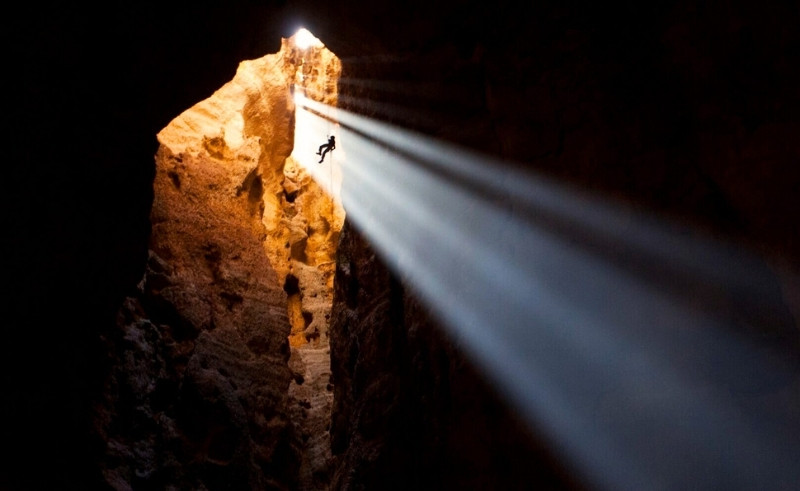
Above ground, Oman is all stone and sun. A country defined by its mountains and desert, by what stretches upward and outward. But beneath this vastness lies another world, one shaped not by hands but by water, silence, and time. Hidden under limestone plateaux and folded into cliffs are chambers carved over millions of years. The entrances are modest, sometimes a slit in the rock or a sinkhole disguised as a hollow in the ground. Step closer, and the earth gives way to a world that feels truly infinite.
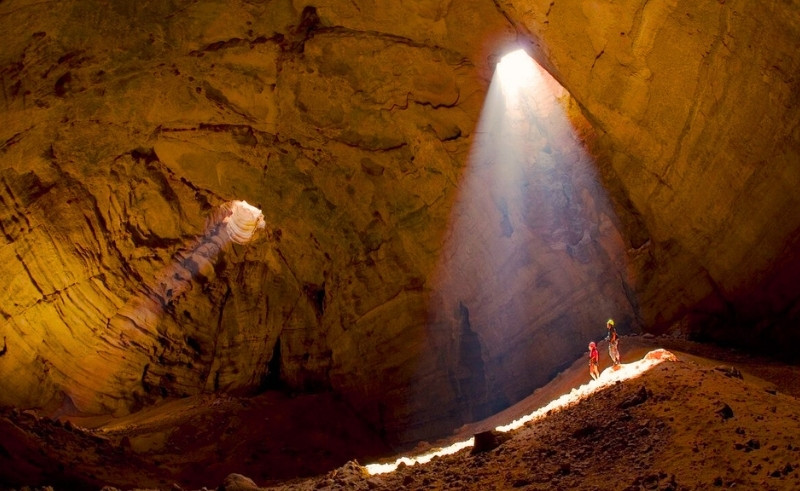
Geologists describe these as karst formations; the result of ancient seas pressed into stone and later dissolved by rain. But science only explains so much. For centuries, Omanis have lived alongside these voids, some believed to house spirits, others used as shelters or ritual sites, linking myth, geology, and memory in a single breath.
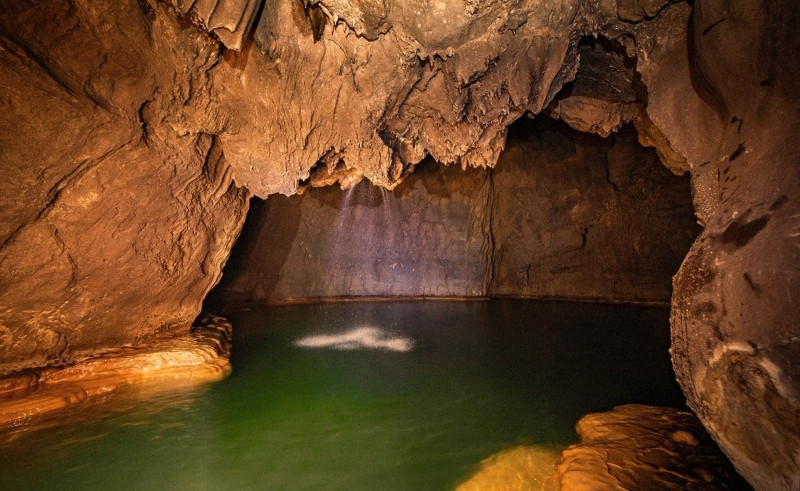
On the eastern edge of the Hajar Mountains, the vast Majlis al Jinn ("Meeting Place of Spirits") swallows you whole. A cavern so large a commercial jet could vanish inside, it's one of the largest underground chambers on Earth, and until recently, the only way in was a vertical descent through a narrow opening in the plateau above. The drop is more than a hundred metres; a slow slide through shadow into a chamber as big as a city square. Once inside, the silence has its own weight, broken only by the shuffle of your boots on limestone. Three shafts of light slice down from the ceiling, like windows left ajar in the desert floor, and in the glow, the scale of the place becomes dizzying. Standing there feels less like exploration than intrusion. Reaching it, though, is no casual feat. Technical climbing gear and official permits are essential, and most visitors now glimpse it through drone footage or surveys, while only specialist expeditions venture into its depths.
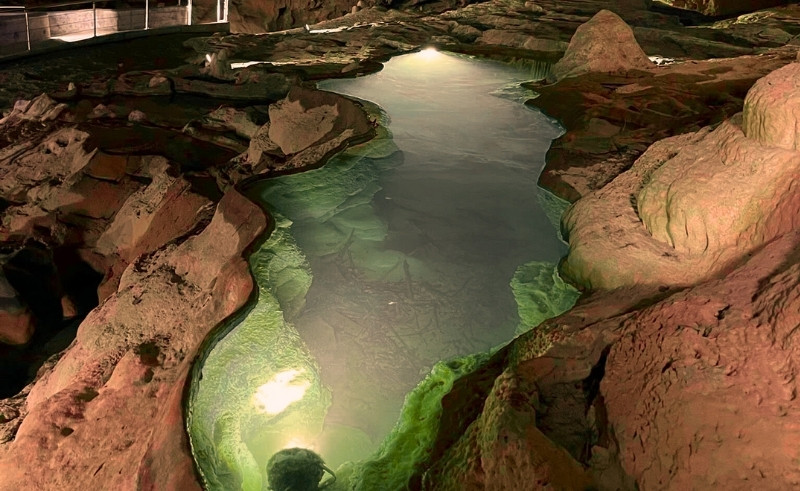
Further west, near the base of Jebel Shams, lies Al Hoota. Unlike Majlis al Jinn, it is far more accessible, its entrance framed by the cliffs of Oman’s tallest mountain. A narrow tram carries visitors into the mountain’s side before the path turns into tunnels dripping with mineral formations. The cave is alive with sound: water trickling in the dark, footsteps echoing against walls that shimmer with calcite. Deeper inside, the path leads to a lake where fish without eyes drift in total silence, their bodies pale from generations in darkness. It feels more like stepping into a dream than a geological feature, the kind of place where the boundary between the natural and the unreal is blurred. Here, the adventure is softened for the curious traveller: guided tours wind safely through the chambers, making it one of the few places where the underworld is open to almost anyone willing to descend.
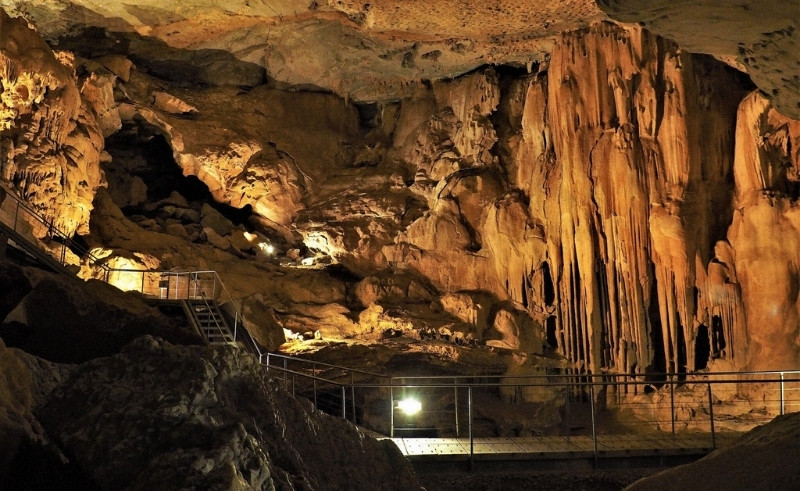
In Dhofar, caves lean into the ocean. At Marneef, the waves hurl themselves into caverns and burst back out in towering jets through blowholes carved by centuries of tide. During the Khareef, when monsoon winds lash the coast, the sound is thunderous, a rhythm that seems to breathe with the sea itself. Spray erupts skywards with every surge, a spectacle that draws families and travellers to the cliffs just outside Salalah. Unlike the remoteness of Majlis al Jinn or the engineered descent of Al Hoota, Marneef lies directly on the coast, easily reached by car, its drama best witnessed when the monsoon arrives and the cave comes alive with the sea’s voice.
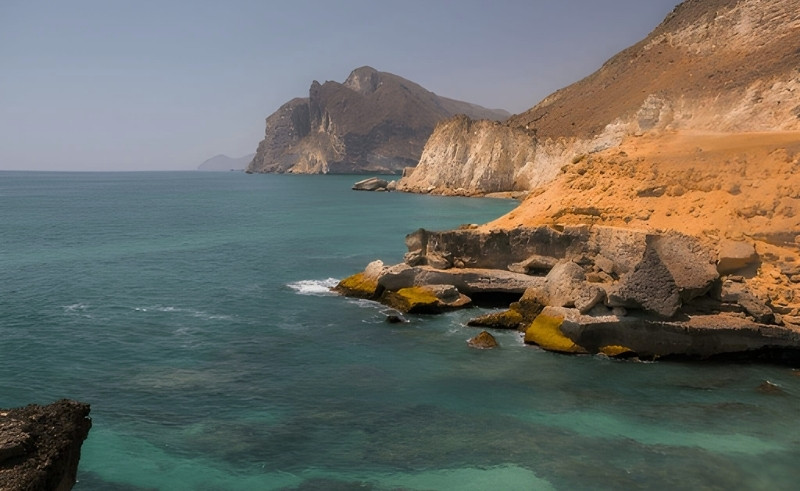
Others remain half-hidden, and therefore, half-charted: Jabal al Kour, where waterfalls vanish into rock; Al Mumiyan, its walls curved into impossible shapes; Ain Humran, cool and damp in the Dhofar hills. Each one a doorway to a world that still resists the light, and a reminder that even in a land of mountains and deserts, the greatest wonders may lie beneath our feet.
- Previous Article Egypt Qualifies for 2026 FIFA World Cup After 3-0 Djibouti Win
- Next Article Six Unexpected Natural Wonders to Explore in Egypt
Trending This Week
-
Dec 12, 2025



























